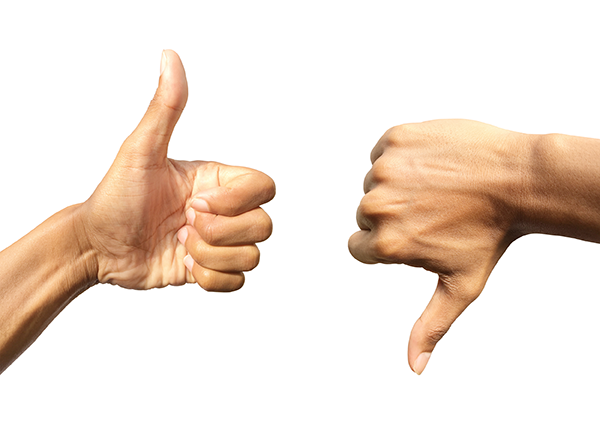There is no such thing as being too prepared, which is why many people choose to invest in personal protective gear. But is it really worth it?
In the past, people never even gave body armor a thought. It’s an important question for law enforcement officers, soldiers, security personnel, and others who work in high-risk occupations and urban settings, but not for civilians.
In recent years, however, armoring up has become more commonplace. The dramatic increase in gun violence and mass shootings has made people more aware of dangerous situations they might find themselves in. As a result, there is now a growing market for civilian-oriented protective gear.
Is purchasing body armor necessary?
Ballistic gear can be a significant investment, yes. It makes sense to own good armor if you have a high-risk occupation. But should this be the only consideration? Is body armor worth the hype it gets?
In this article, we shall look at the pros and cons of armor as an investment. Examining the worth of body armor can help you decide whether or not you should spend good money on this gear.
Wearing Body Armor: The Advantages
Protection
Designed to absorb and disperse the energy of a projectile, body armor significantly reduces the chances of injury or death. For people whose lives are in constant danger, armor worth is immeasurable.
Wearing ballistic gear is crucial for military situations, law enforcement operations, and disaster-type scenarios where professionals regularly face the risk of being in violent situations. Civilian shooters or those who live in a high-risk urban environment and engage in activities such as hunting can also benefit from the added layer of safety armoring it provides.
Peace of Mind
The second advantage is having a sense of calm. of Knowing that you have ballistic gear can significantly reduce your stress and anxiety levels, primarily if you work in high-risk environments where there are live rounds whizzing past you. This peace of mind can also extend to family members and loved ones who may worry about your safety.
Versatility
Modern armors are available in various styles and designs, each tailored to different levels of security and comfort — another big advantage. You can choose the type of body armor that best fits your specific needs and preferences in certain settings, whether you require lightweight protective gear for mobility or heavy-duty full armor that provides the most protection. This versatility also extends to the different types of armor available, including soft armor, hard armor, and hybrid armor.
Big Savings
Although tactical gear seems expensive from the get-go, buying a quality set involves a one-time expense that can provide years of safety. Armor costs are lower than medical treatment or funeral expenses in the event of an injury or death, which translates to a significant amount of savings. For organizations that require personal protective gear for their employees, investing in body armor can reduce the cost of insurance premiums and workers’ compensation claims.
Confidence and Performance
Wearing protective armor can enhance confidence and performance. Feeling secure against lethal threats can boost morale, particularly in high-pressure situations such as quick reaction force missions (QRF). This confidence can translate to improved performance, allowing you to focus on tasks without fear of injury or death.
Ballistic Protection: The Drawbacks
High Cost
High-quality body armor can be expensive, particularly if you require specialized gear or custom fittings. In addition, the cost of maintaining and replacing armor can pile up over time, further adding to the expense. As such, investing in protective gear can be difficult for individuals or organizations with limited budgets.
Weight and Bulkiness
While modern body armor is lighter than ever, the chest plate’s added weight can still be restrictive and uncomfortable for some. For example, steel plates can weigh anywhere from 4 to 10 pounds, depending on the size and level of safety. The additional weight can make moving quickly or performing specific tasks difficult, particularly in high-stress situations.
Yes, a protective vest with ceramic plates has a lighter weight (around 2 to 5 pounds) and is more comfortable than one with steel plates, but it is more expensive and more susceptible to damage. In addition, a carrier or vest with plate inserts can be bulky, making the gear challenging to conceal or wear inconspicuously. You can be an overt target when you need to maintain a low profile.
Discomfort
Armor plates are made of tough and durable materials such as steel, ceramic, or composites to provide a high level of security against ballistic threats. Besides being heavy and cumbersome, these armor plates can also trap heat and restrict airflow — a challenge for those required to wear the gear for extended periods or engage in physical activities while wearing the armor.
Ceramic-plated vests may be lighter than their steel counterparts. However, they can still have some of the same limitations in terms of heat and ventilation, especially in hot and humid environments.
False Sense of Security
Besides the obvious negatives, ballistic gear may give the wearer a false sense of security. Body armor is designed to protect the wearer from various types of projectiles, but it does not guarantee invincibility.
For example, expensive ceramic plates are designed to protect against rifle fire. Rifle plate usage includes military operations, but ceramic plates are susceptible to cracking or breaking if subjected to repeated impacts, such as in a close-quarters battle or urban operations.
Those who wear ballistic protection may become overconfident and take unnecessary risks. Such risks, even on a few occasions, increase the likelihood of injury or death. This false sense of security can extend to family members and loved ones, who may assume that the wearer is immune to harm.
Factors to Consider When Investing in Body Armor
Investing in protective gear is a personal choice that depends on many factors. Some people feel that the risks of forgoing body armor are too significant, while others believe that the benefits do not justify the cost. Here are a few points to consider if you’re still on the fence about purchasing tactical armor:
Occupation
Various occupations face different risks and threats. The level of security needed varies depending on the specific job duties and environment.
For example, law enforcement officers and military personnel require tactical full-body armor to withstand high-velocity rounds and safeguard against explosive devices. At the same time, emergency medical responders need lighter armor and more flexible gear that allows for freedom of movement.
Sentry details at vehicle checkpoints need bulletproof vests for protection against handgun and shotgun rounds. These vests are made of layers of Kevlar or other materials that can stop a bullet. The vests may contain a chest plate or two to stop rifle rounds.
Journalists and other civilians may require body armor to shield them against common handgun threats but may not need the same level of safety as those in law enforcement or military professions.
Individuals involved in the gun industry, particularly those who manufacture or test firearms, may be at risk of injury and could benefit from wearing body armor. Wearing armor is also advantageous for gun dealers who face robbery or theft. Shooting range employees may also need personal armor as part of the range safety policy.
Lifestyle
Your activities also play a crucial part in your decision to invest in protective gear.
If you’re an outdoor enthusiast who likes camping, hiking, or hunting, invest in comfortable, lightweight body armor that protects against punctures and cuts.
If you travel to urban terrain and high-risk areas, you will most likely purchase tactical gear that’s easily worn, effortlessly concealable, and protects against bullets and shrapnel.
Are you a high-profile individual whose normal day involves targeted attacks? It would be best to purchase a personal carrier with hard plate inserts.
If you keep firearms in your home for personal defense, investing in body armor makes more sense than the alternative, as there is a lower risk of injury.
Budget
A higher price tag may indicate higher quality materials and construction, which means better stability and durability. However, you must ensure you’re not overpaying for unnecessary features or inflated brand names. Why get more expensive ceramic plates when you are only likely to face lower-level threats, such as handgun or lower-velocity rifle rounds?
It’s essential to balance your needs with your ability to pay. It’s better to invest in high-quality, well-fitted gear that you can afford than to skimp on protective features to save money. It’s equally important to find cheaper options and not overspend on features you don’t need or can’t afford.
Legal Considerations
The laws and regulations regarding the ownership, use, and possession of tactical gear can vary widely by jurisdiction and can have important implications for body armor users.
For example, no federal laws in the United States prohibit individuals from owning or wearing tactical gear. However, some states and local jurisdictions have laws regulating civilians’ purchase, ownership, or use of body armor, such as restrictions on selling gear to convicted felons or individuals with criminal histories.
There are also legal considerations with regard to using protective gear in certain professions, such as law enforcement or security. These professions have specific regulations on the type and level of body armor that can be used and requirements for training and certification.
Is Body Armor Worth It? The Verdict
Investing in tactical gear ultimately comes down to personal preference and individual circumstances.
For those who work in high-risk professions or are concerned about personal safety, ballistic gear can provide valuable peace of mind and security. Situational awareness is critical to making the best decision, so do your research, consider your needs and budget, and choose high-quality gear that meets your specific requirements.
By carefully weighing the pros and cons you can make an informed decision and determine whether body armor is a good investment.






